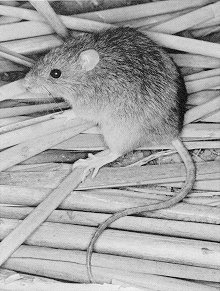Okapi
The Okapi is a native African animal that is dark brown or deep purple red, with a pattern of stripes that move horizontally like those of a zebra.
They lower legs are white, with dark circles on the joints.
The Okapi’s head looks a great deal like a horse with a long black muzzle and a thick stout neck.

Okapi
It has large ears and a black tongue.
Its body slopes with the front a great deal higher than the back. Male Okapi have horns, or knobs which are covered with skin on their heads, which arrive about the age of two years.
The okapi is most active during the day, and will traverse the same pathways along the jungle.
To find a breeding partner they will use a superb sense of smell and track one. A soft coughing sound during rutting is made to attract them.
The little ones are born between August and October.
Okapi females begin to give birth at about the age of two years.
After mating they give birth about 14 months later, to one little okapi.
Expectant mothers enter into a very dense forested area to give birth. The newborns can stand about two hours after birth, but lie hidden for several days.

Baby Okapi
The little okapi don’t’ seem to imprint as other animals do, on their mothers, but will instead nurse from different females, who seem to permit it.
Mothers are very protective of their young, and will defend them furiously before any opponent.
Before fighting a female will send out a threat by beating on the ground with her forelegs.
Okapi require a certain amount of sulphur in their diet and will eat sulphurous mud from the river banks.
The okapi were considered a legend until the late 1800’s, or early 1900’s when the new species was discovered.
Find out more about the Okapi over at Wikipedia »




their skin looks unusual and i have to say i think the picture appears photoshopped
thier skin is more unusual than the zebro or horse skin.
I am very interested about the pictures of the okapi and by the way who is not interested in watching a mixed up animal of a zebra and I think that this is a dear
This is my first research paper and I chose to do it about the okapi. i chose the okapi because I think that is a cool animal.
the okapi is really funny looking
so is it cousin with the giraffe yes or no i don’t know
ohaiiiooooo i love the okapi